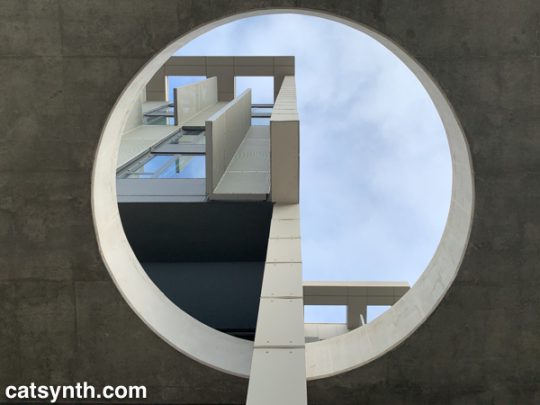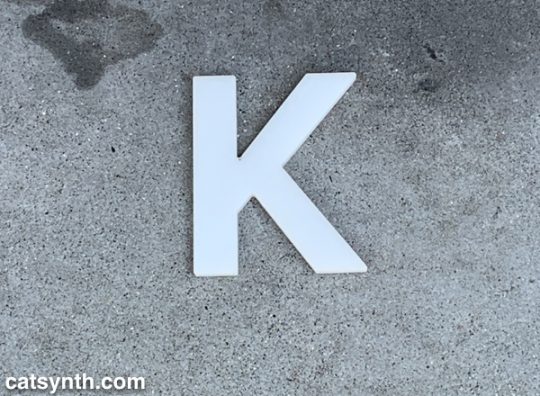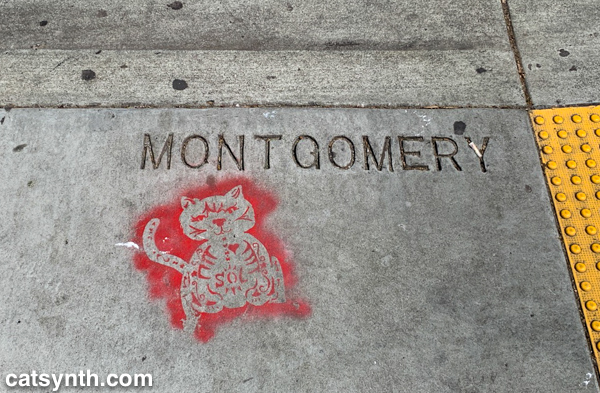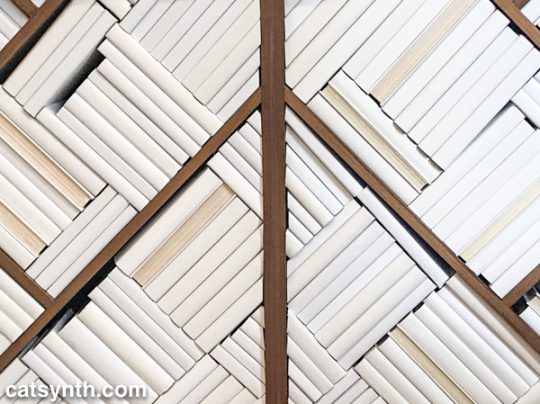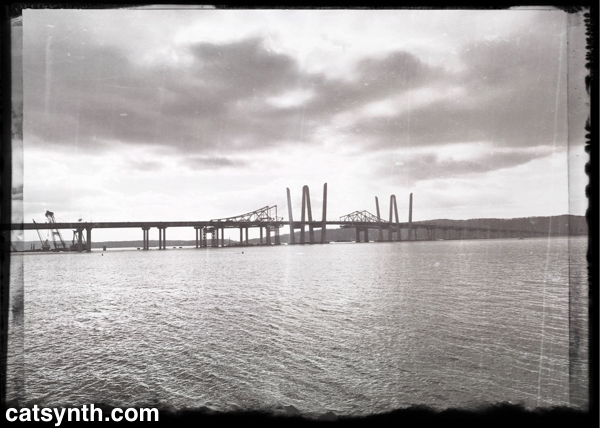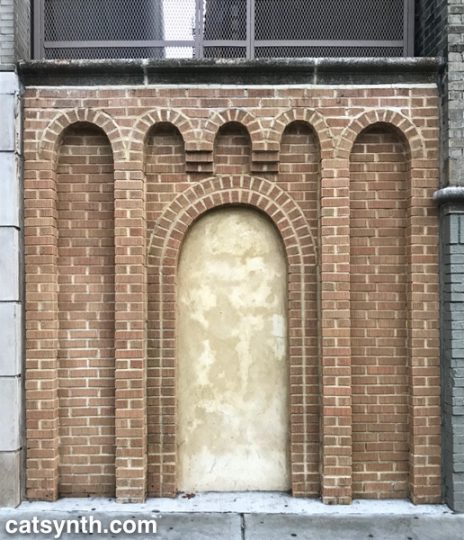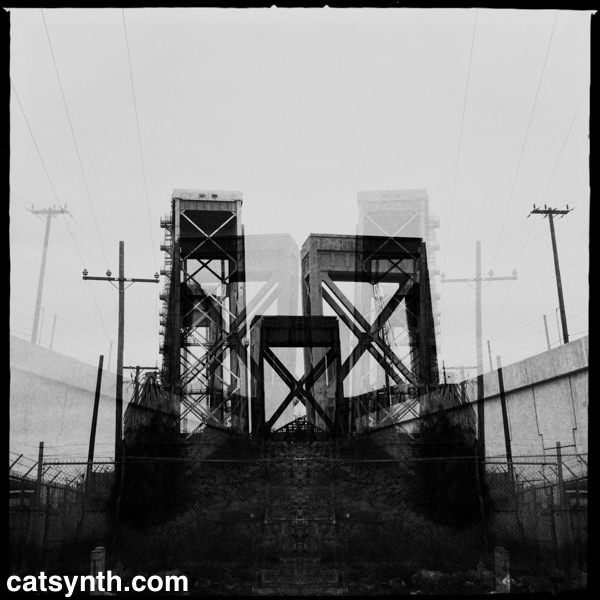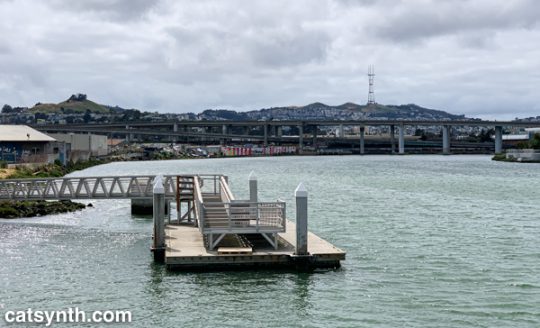
A beautiful view of the still-industrial Islais Creek in San Francisco, with the double-decker I-280 in the background. Although so much in San Francisco has changed and industrial zones are disappearing, I am heartened to see the area still has some of the character the drew me to it several years ago.
I was nominally in the area that day to see artists and their work at Islais Creek Open Studios.

